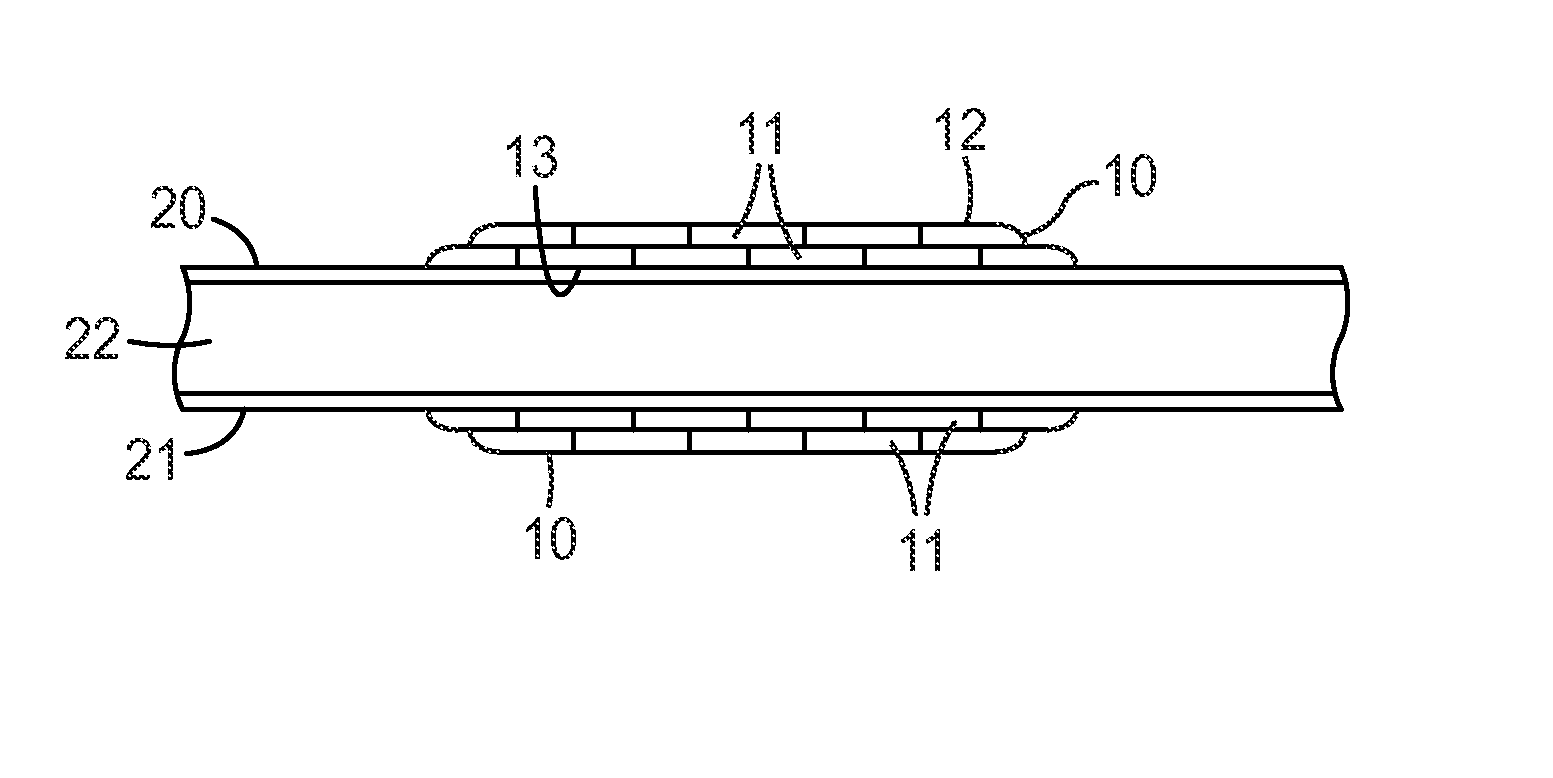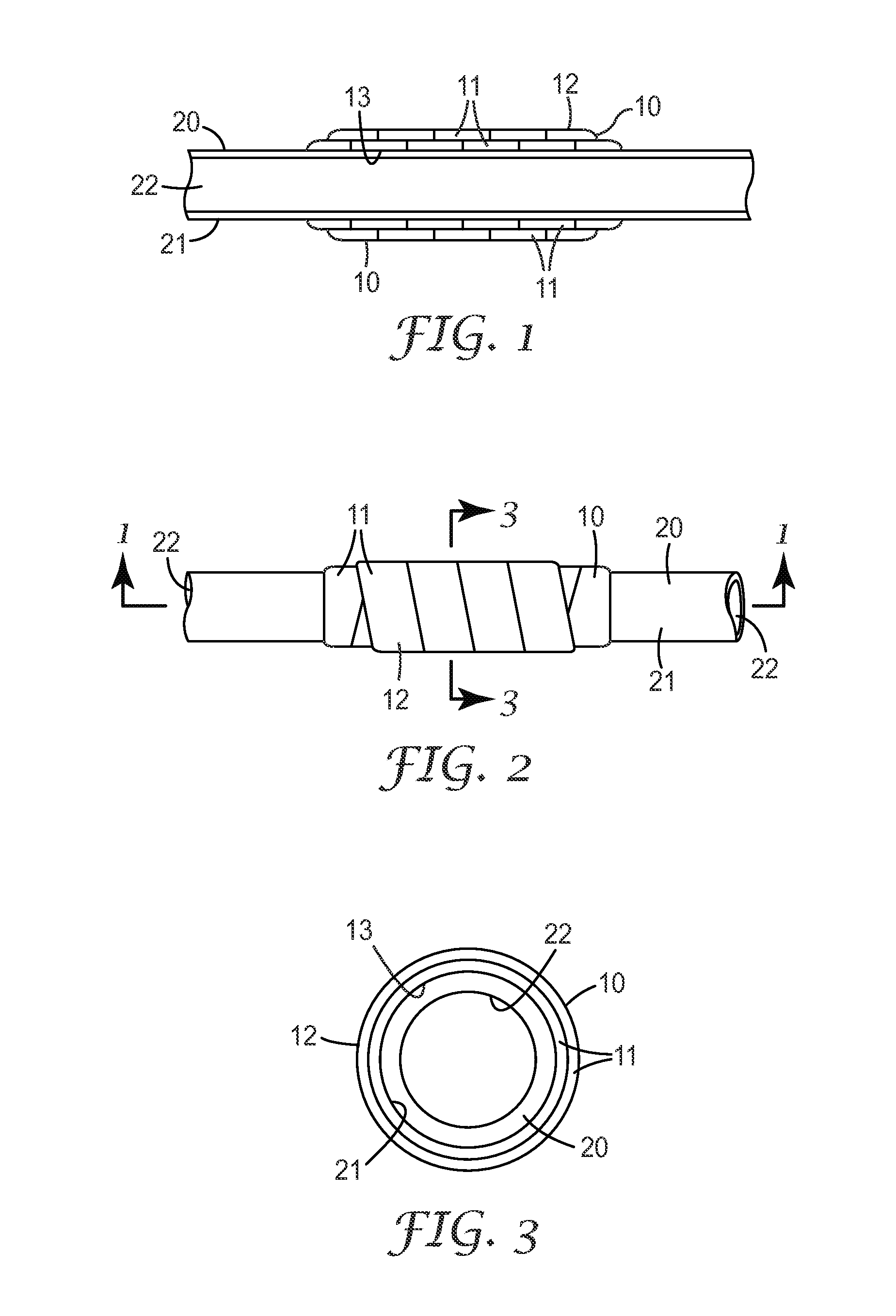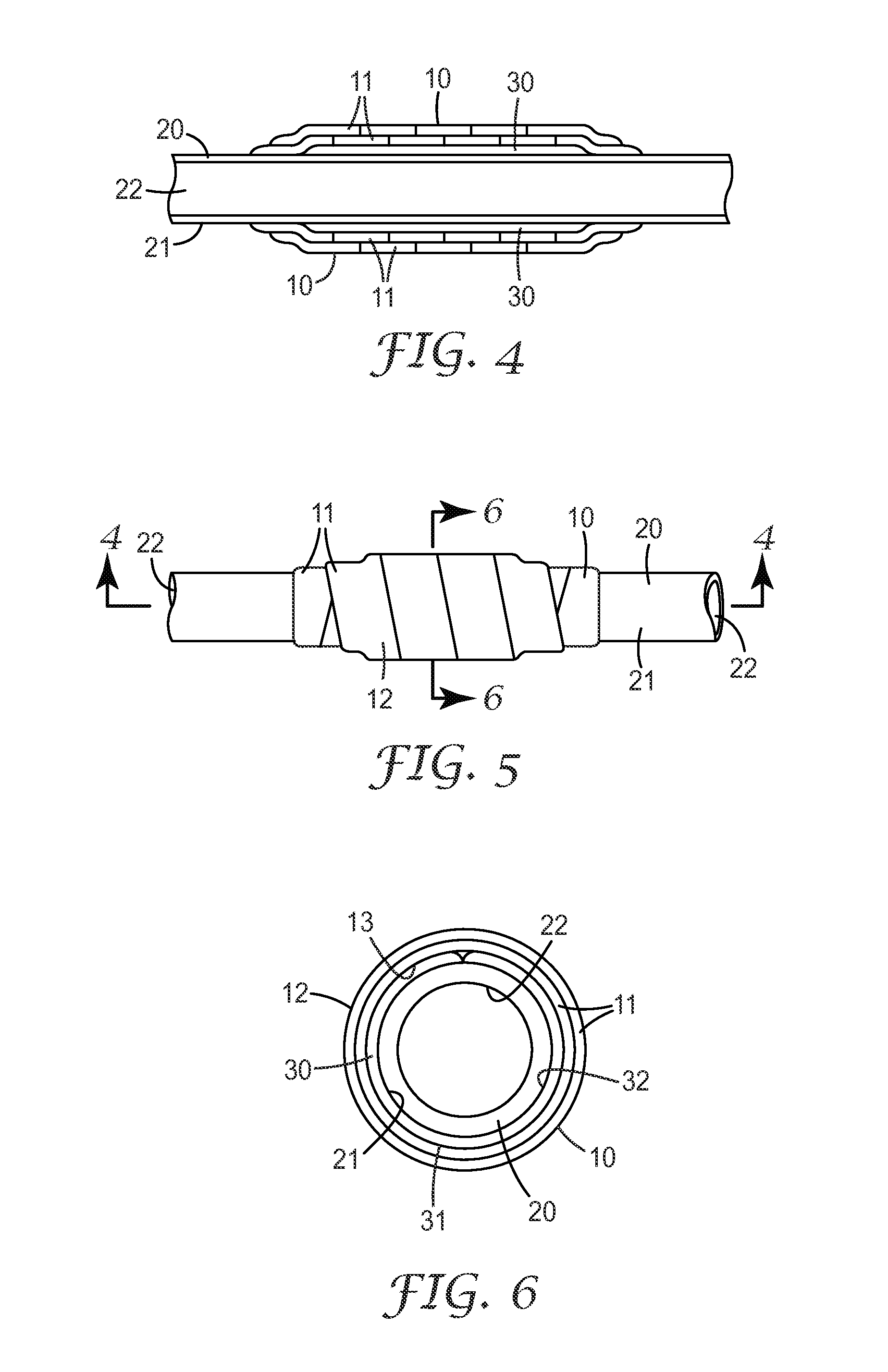Thermally insulated components for exhaust systems
a technology of exhaust system and components, applied in the direction of inorganic insulation, machines/engines, mechanical equipment, etc., can solve the problems of relatively high cost of heat shields, high installation or replacement costs, etc., and achieve the effect of improving/lowing the emissions of products and low cos
- Summary
- Abstract
- Description
- Claims
- Application Information
AI Technical Summary
Benefits of technology
Problems solved by technology
Method used
Image
Examples
example 1
[0075]Embodiments of the invention were produced by the method generally described herein. Slurries were prepared using ingredients shown above. In each slurry, inorganic materials were added to liquid component(s) using a high shear mixer and blended until smooth to form a given slurry as shown in Table 2 below.
TABLE 2SlurriesSlurryComposition150 wt % 2327 colloidal silica, 50 wt % POLYPLATE ™ P267 wt % 2327 colloidal silica, 33 wt % calcium carbonate357.1 wt % 1144 colloidal silica, 42.9 wt % calcium carbonate494.4 wt % 2327 colloidal silica, 5.6 wt % M-5 fumed silica587.8 wt % 1144 colloidal silica, 12.2 wt % M-5 fumed silica660 wt % 2327 colloidal silica, 40 wt % talc752.9 wt % 1144 colloidal silica, 47.1 wt % talc860 wt % 2327 colloidal silica, 40 wt % silicon carbide950 wt % 2327 colloidal silica, 40 wt % aluminum powder,10 wt % POLYPLATE ™ P1082.3 wt % 2327 colloidal silica, 17.7 wt % bentonite clay1184 wt % 2327 colloidal silica, 16 wt % fumed alumina1284.4 wt % 2327 colloid...
example 2
[0078]Additional test samples were prepared using the procedures of Example 1. The following test samples utilized various colloidal binders. Results are shown in Table 4.
TABLE 4Test Samples and ResultsTestCoatedDryCrushSampleSlurryweight (g)weight (g)Conditionstrength N1002574.358901611012571.656.1500 3071022569.454.6500 wet225103266545.990871042659.542.7500 1841052660.332.2500 wet1541062765.654.2901361072760.850.6500 2701082761.751.3 500 Wet2121092875.658.9902171102874.358500 4201112871.656.1500 wet3601122983.152.890681132971.947500 1361142972.547.3500 wet911152471.750901731162469.148.5500 260117247049500 wet247118304931.690111193049.331.7500 18120305333.2500 wet181213153.3309013.51226287.766.490961236280.561.8500 1871246280.862.3500 wet1411256478.558902111266470.853500 3781276467.751500 wet33112867786090198129677256500 468130677357500 wet42813168735690122132686752500 227133686853500 wet17713469755690112135696549500 211136696650500 wet13713770725490253138706953500 361139707153500 ...
example 3
[0079]Additional test samples were prepared using the procedures of Example 1. The following test samples utilized sodium silicate binders. Results are shown in Table 5.
TABLE 5Test Samples and ResultsTestCoatedDryCrushSampleSlurryweight (g)weight (g)Conditionstrength N2003680.243.6902082014093.955.3903132024181.954902022034183.754500 2422044185.656500 wet2402054270.3647.2903832064269.846.9500 1312074267.7745.8 500wet1502084454.835.9902572094461.438.9500 902104463.139.7500 wet802114566.341.7902752124559.938.7500 1322134560.438.9500 wet942144668.143.9901452154660.339.5500 1752164659.739.2500 wet1532175171.845.590832185159.639.5500 1292195245.5219032205245.521500 22215245.521500 wet22225347.622.790132235344.522.4500 122245345.5122.5500 wet72255448.625.69026226544725.3500 262275446.525.2500 wet26
PUM
| Property | Measurement | Unit |
|---|---|---|
| Length | aaaaa | aaaaa |
| Fraction | aaaaa | aaaaa |
| Fraction | aaaaa | aaaaa |
Abstract
Description
Claims
Application Information
 Login to View More
Login to View More - R&D
- Intellectual Property
- Life Sciences
- Materials
- Tech Scout
- Unparalleled Data Quality
- Higher Quality Content
- 60% Fewer Hallucinations
Browse by: Latest US Patents, China's latest patents, Technical Efficacy Thesaurus, Application Domain, Technology Topic, Popular Technical Reports.
© 2025 PatSnap. All rights reserved.Legal|Privacy policy|Modern Slavery Act Transparency Statement|Sitemap|About US| Contact US: help@patsnap.com



